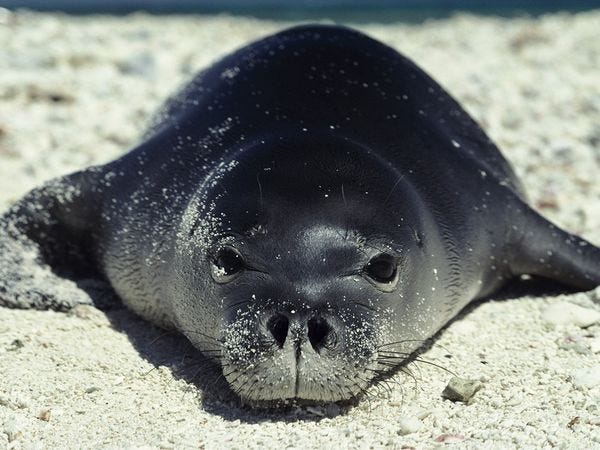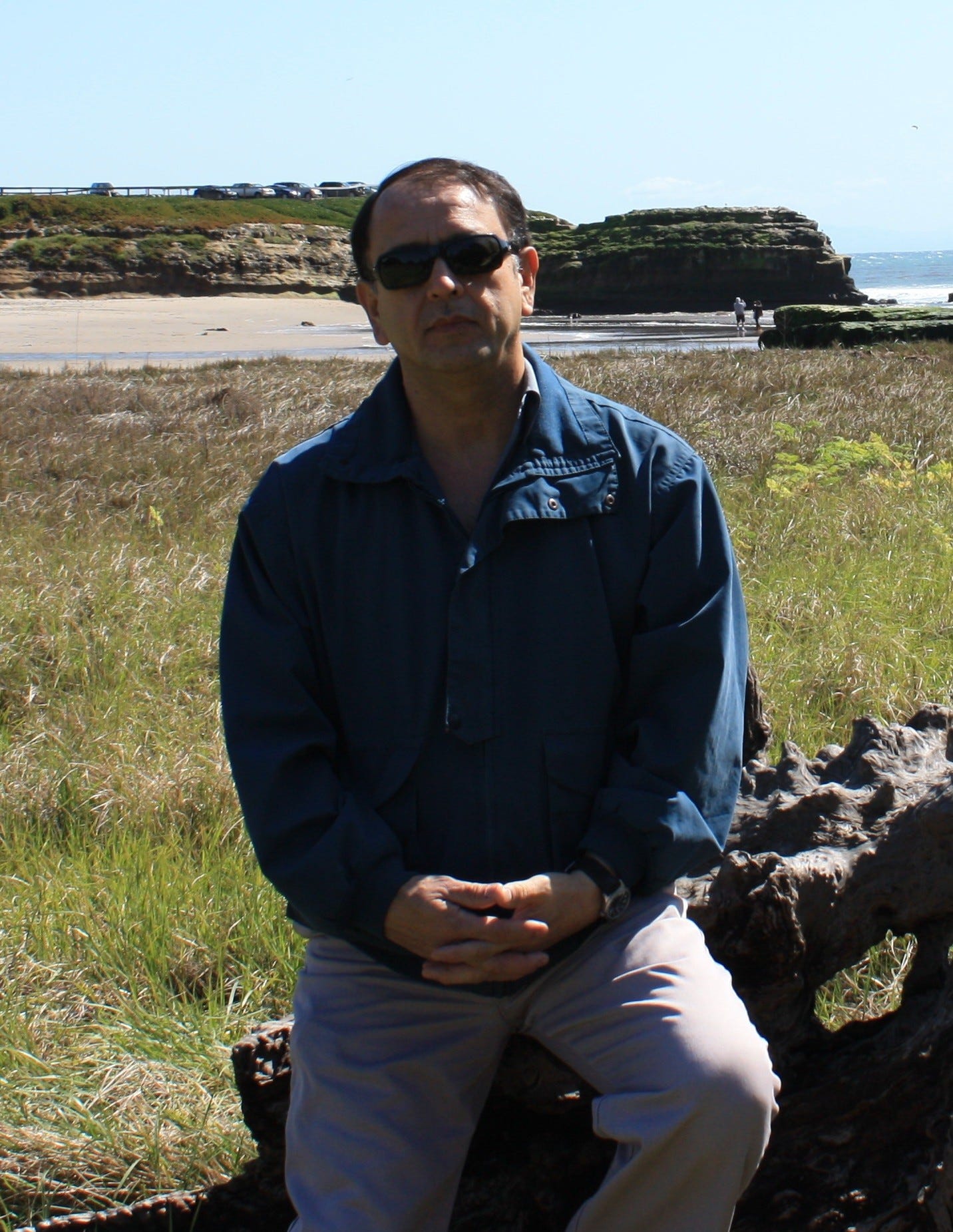Pinniped Expert Discusses the Fate of Seals and Sealions as the Climate Changes
World Expert on Seals Discusses their Fate in Light of Climate Change
By Jordan Schaul | National Geographic | October 25, 2012 (Edited)
Contributing Editor Dr. Jordan Schaul interviews Dr. David Aurioles Gamboa, one of his first mentors, concerning the future of seals, sea lions, fur seals, and walruses given the predicted impact of climate change on marine ecosystems. In 1995, Jordan conducted census work and activity budget studies on California sea lions under David’s supervision.
David Aurioles Gamboa is one of the foremost experts on land-breeding pinnipeds in the world and perhaps the leading expert on resident and non-resident pinniped species found in México. As a marine mammalogist, he has studied the California sea lion for over thirty years and has contributed greatly to our current knowledge of their biology and behavior in the southern part of their range. Earlier this year, he and some of his distinguished colleagues co-authored an article entitled “Global Threats to Pinnipeds,” which was published in the journal Marine Mammal Science.
I first met David in La Paz, Mexico soon after an El Nino—a periodic climate pattern associated with the warming of the Pacific Ocean. The tropical weather pattern and similar El Nino-like events create extreme weather conditions around the world and have a particularly strong influence on marine ecosystems of the Eastern Pacific and on Pacific coast communities. The oscillations in water temperature reduce plankton productivity and force certain fish populations to colder water, which is too deep for some marine predators like most pinnipeds to access. They essentially starve to death. The effects of these oscillations, although catastrophic, are only intermittent.
I caught up with David to learn more about the impact of global climate change on pinniped species worldwide from tropical species to ice-associated species, like ringed seals.
Interview:
Jordan: Compared to mammalian taxa in general, pinnipeds are actually more threatened if we evaluate them at the species level. Although a subspecific or subpopulation assessment seems warranted given threats to conservation, it seems notable that one in five mammals are threatened compared to one in three pinnipeds; Among 36 species of pinnipeds, two have gone extinct in recent times. These include the Japanese sea lion and the Caribbean monk seal. What are the major threats to pinnipeds right now, and what species, subspecies, or populations are you most concerned about?
David: Pinnipeds are doubly exposed to a variety of threats because of their amphibious nature: On land or ice where they breed, they are facing an increasing invasion of their habitat on islands or a reduction of ice surface due to climate change, as in the case of arctic seals. In the water where they obtain their food, pinnipeds are being affected by a considerable increase in the exploitation of marine and freshwater resources by fisheries. In addition, the extensive use of gill nets is imposing high mortality on some populations as a result of entanglement.
Undoubtedly, those species or populations that are already in low numbers are of the highest concern. In this situation is the Saimaa ringed seal (Pusa hispida saimensis), which is a subspecies of the ringed seal (Pusa hispida), and the extant monk seal species, the Mediterranean monk seal (Monachus monachus), and the Hawaiian monk seal (Monachus schauinslandi). Some other species such as the northern elephant seal and the Guadalupe fur seal that were decimated to almost extinction during the XIX and XX centuries are recovering in numbers, but with low genetic variability, they are vulnerable to pathogenic agents and the respective diseases they cause.
Jordan: The California sea lion and harbor seal are probably the most well-known pinnipeds in North America because of their distributions and because they are commonly displayed in zoo and aquarium exhibits. What is the status of the California sea lion in particular, and what are the threats facing the species now and in the near future? Can you speculate on future threats to the species?
David: Recent estimates for the global numbers of the California sea lion are around 355,000 individuals while harbor seals are reported to number between 350,000 and 500,000 animals. Those numbers and their wide distributions place these species in the IUCN category of Least Concern. However, in the case of the California sea lion, we have learned that the species is comprised of 3 or 4 populations, each with different population dynamics. One of these populations is found in the central and upper Gulf of California and is not larger than 25,000 individuals. This particular California sea lion population is genetically isolated from the remaining populations and is adapted to particular ecological conditions including a strong seasonal temperature variation. We are particularly concerned about this population mainly because of the increasing human activities in the Gulf of California, including tourism, fisheries, and general human population expansion along the coast.
Jordan: Are tropical, temperate, and sea-associated pinniped species all going to be susceptible to the effects of climate change, or will some fare better than others in your opinion?
David: Seals and sea lions from low latitudes are of special concern due to their historically low numbers and difficulties recovering. As mentioned monk seals that had a relative in the Caribbean, which went extinct during the XX Century are of concern.
Two species of pinnipeds from the Galapagos Islands are in serious danger. The Galapagos sea lion and fur seal have been affected by recurrent El Niño events during the last 3 decades. Their numbers are low and have started to show modest signs of recovery, but this maybe is temporary as we await the effects of another El Niño on the rebounding population. It seems that El Niño is a natural event over which we have no control over, but some scientific evidence suggests that El Niño events may be more frequent and stronger due to global warming. Thus a simple change of habits for reducing our “carbon footprint” may be very beneficial for pinnipeds and the world’s biodiversity in general in the long term.
Jordan: I remember that while doing census work on California sea lions under your supervision that we observed a subadult northern elephant seal on a sea lion rookery in the Gulf of California, not far off the eastern coast of Baja, California. Although it was exciting to see a non-resident, such incidents of nonresident sightings will be used as indicators of climate change in the future. I suspect that climate change effects will increase the likelihood of encountering more non-resident pinniped species in some places along the Pacific coast of North America at an unprecedented rate. Can you comment on this?
David: From time to time, nonresident pinnipeds are observed inside the Gulf of California. The list of species observed in the area includes the northern elephant seal as probably the most recurrent, as well as the harbor seal and the Guadalupe fur seal. Other alien pinnipeds have been observed in southern Mexico, such as the Galapagos fur seal. Although the number of sightings does not allow a robust analysis, there is a tendency to observe more Galapagos pinnipeds outside the Archipelago during El Niño events. In general marine organisms from low latitudes tend to invade higher and colder latitudes during El Niño events. One particular case is the Humboldt squid— a fast-growing and voracious species—that would appear in California during the warmer years, but since the El Niño (1997-98) the species expanded its geographic range in the North Pacific, and now is more abundant in California and may be found as north as Alaska, with serious concern about its ecological impact.
ABOUT NATIONAL GEOGRAPHIC SOCIETY
The National Geographic Society is a global nonprofit organization that uses the power of science, exploration, education and storytelling to illuminate and protect the wonder of our world. Since 1888, National Geographic has pushed the boundaries of exploration, investing in bold people and transformative ideas, providing more than 14,000 grants for work across all seven continents, reaching 3 million students each year through education offerings, and engaging audiences around the globe through signature experiences, stories and content. To learn more, visit www.nationalgeographic.org or follow us on Instagram, Twitter and Facebook.
MEET THE AUTHOR
Jordan Carlton SchaulWith training in wildlife ecology, conservation medicine, and comparative psychology, Dr. Schaul's contributions to Nat Geo Voices have covered a range of environmental and social topics. He draws particular attention to the plight of imperiled species highlighting issues at the juncture or nexus of sorta situ wildlife conservation and applied animal welfare. Sorta situ conservation practices are comprised of scientific management and stewardship of animal populations ex situ (in captivity / 'in human care') and in situ (free-ranging / 'in nature'). He also has a background in behavior management and training of companion animals and captive wildlife, as well as conservation marketing and digital publicity. Jordan has shared interviews with colleagues and public figures, as well as editorial news content. In addition, he has posted narratives describing his own work, which include the following examples: • Restoration of wood bison to the Interior of Alaska while (As Animal Curator at Alaska Wildlife Conservation Center and courtesy professor at the University of Alaska) • Rehabilitation of orphaned sloth bears exploited for tourists in South Asia (As executive consultant 'in-residence' at the Agra Bear Rescue Center managed by Wildlife SOS) • Censusing small wild cat (e.g. ocelot and margay) populations in the montane cloud forests of Costa Rica for popular publications with 'The Cat Whisperer' Mieshelle Nagelschneider • Evaluating the impact of ecotourism on marine mammal population stability and welfare off the coast of Mexico's Sea of Cortez (With Boston University's marine science program) Jordan was a director on boards of non-profit wildlife conservation organizations serving nations in Africa, North and South America and Southeast Asia. He is also a consultant to a human-wildlife conflict mitigation organization in the Pacific Northwest. Following animal curatorships in Alaska and California, he served as a charter board member of a zoo advocacy and outreach organization and later as its executive director. Jordan was a member of the Communication and Education Commission of the International Union for the Conservation of Nature (CEC-IUCN) and the Bear Specialist Group of the IUCN Species Survival Commission (BSG-SSC-IUCN). He has served on the advisory council of the National Wildlife Humane Society and in service to the Bear Taxon Advisory Group of the Association of Zoos and Aquariums (AZA Bear TAG). In addition, he was an ex officio member of the council of the International Association for Bear Research and Management.






